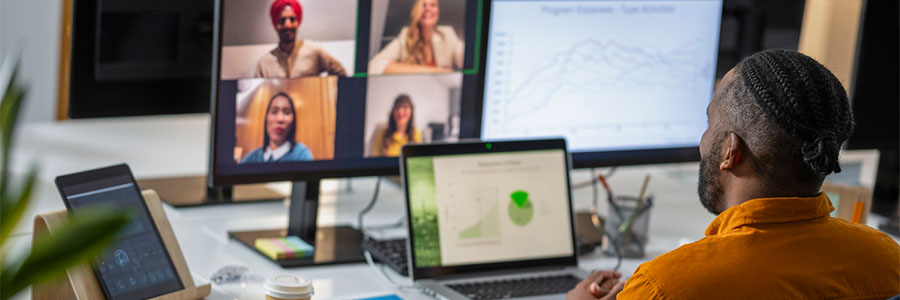For small business owners, the pivot to remote work was a scramble, and an expensive one at that. The rush to equip staff with laptops, secure data connections, and remote access tools quickly turned into a budget-busting exercise. But what if there was a smarter way to keep your team connected without shelling out for new computers?
Enter Microsoft Virtual Desktops (MVD) — a solution that’s gaining traction for its ability to provide powerful, secure access to business applications from virtually any device. And the best part? You don’t need to spend a dime on new hardware.
Old Computers, New Life
Imagine this: Your office laptops are four years old, struggling to run the latest software, and crashing more often than a Monday morning server. Instead of buying shiny new replacements, MVD gives those aging devices a new lease on life.
Employees can access a fully equipped Windows desktop hosted in Microsoft’s secure cloud environment. It’s like having a brand-new computer, but without the cost. All the heavy lifting is done in the cloud, so even that sluggish 5 year old laptop can perform like a top-tier workstation.
Consider the math, a new business-grade laptop such as Dell XPS can set you back $1,200 per employee. Deploying Microsoft Virtual Desktops instead? A fraction of the cost. Suddenly, the choice between spending $12,000 on ten new laptops or opting for a cloud-based solution doesn’t seem so tough.
Seamless Integration with On-Premise Devices
One common concern with cloud-based desktops is compatibility with existing hardware, especially printers, scanners, and other office devices. Microsoft Virtual Desktops address this with seamless integration:
- Universal Print Support: Employees can connect to on-premise printers just as they would from a local desktop.
- Remote Desktop Printing: Printers connected to the employee’s local network can be accessed through the virtual desktop, minimizing workflow disruptions.
- USB Redirection: USB devices like scanners, webcams, and headsets can be redirected, ensuring employees can continue using essential hardware without interruptions.
This means that even if your accounting department needs to print checks on a dedicated office printer, they can do so from their virtual desktop without a hitch.
The Hidden Cost of Data Breaches
When your team is logging in from all corners of the map, security risks skyrocket. Personal devices often lack proper security controls, opening the door to data breaches, ransomware attacks, and costly downtime.
Microsoft Virtual Desktops tackle this risk head-on:
- Multi-Factor Authentication: Only authorized users can access sensitive data.
- Data Encryption: Files are encrypted both in transit and at rest, preventing unauthorized access.
- Centralized Management: IT admins can monitor, control, and revoke access with a few clicks, reducing the risk of insider threats.
How much does a data breach cost? For small businesses, the average runs upwards of $120,000. For many, that’s a financial hit they simply can’t afford. MVD helps mitigate that risk without adding costly third-party security tools.
Compliance Without the Headaches
For industries with strict compliance requirements — healthcare, finance, legal — keeping data secure isn’t just good practice. It’s the law. But managing compliance across dozens of devices can feel like juggling fire.
With MVD, data never actually resides on the employee’s device. Everything lives in the cloud, where Microsoft’s top-tier security protocols handle encryption, backups, and access management. That means fewer headaches for IT, less risk for business owners, and stronger compliance with regulations like HIPAA or PCI DSS.
Bottom Line: Why Buy New When You Can Virtualize?
In a world where budgets are tightening and every dollar counts, Microsoft Virtual Desktops offer a compelling value proposition:
- Extend the life of old hardware.
- Fortify remote work security without the need for extra tools.
- Streamline IT management and regulatory compliance.
Before you break out the company credit card to buy another round of laptops, consider the cloud. Microsoft Virtual Desktops could be the smarter, safer, and far more cost-effective choice.

